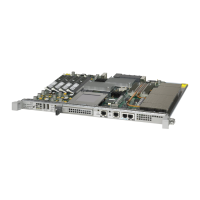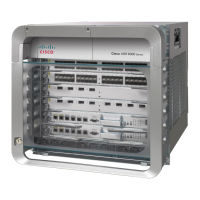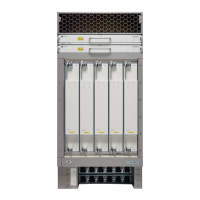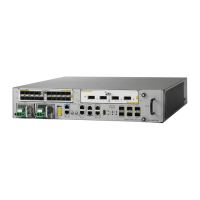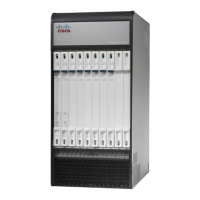7-5
Cisco ASR 1000 Series Aggregation Services Routers Software Configuration Guide
OL-16506-10
Chapter 7 Configuring Call Home
How to Configure Call Home
What To Do Next
To find out more about the Gigabit Ethernet Management interface on the Cisco ASR 1000 Series
Routers or perform additional related configuration tasks on the management interface, see the
“Using
the Management Ethernet Interface” section on page 1 .
Configuring a Destination Profile
A destination profile contains the required delivery information for an alert notification. You can
configure multiple destination profiles of one or more type.
You can create and define a new destination profile or copy and use another destination profile. If you
define a new destination profile, you must assign a profile name.
Note The Call Home feature provides a predefined profile named CiscoTAC-1 that is inactive by default. The
CiscoTAC-1 profile is intended for use with the Smart Call Home service, which requires certain
additional configuration steps to enable the service with the Call Home feature. For more information
about this profile, see the “Using the Predefined CiscoTAC-1 Destination Profile” section on page 7-15.
You can configure the following attributes for a destination profile:
• Profile name—A string that uniquely identifies each user-defined destination profile. The profile
name is limited to 31 characters and is not case-sensitive. You cannot use all as a profile name.
• Transport method—The transport mechanism, either e-mail or HTTP (including HTTPS), for
delivery of alerts.
–
For user-defined destination profiles, e-mail is the default, and you can enable one or both
transport mechanisms. If you disable both methods, e-mail is enabled.
–
For the predefined Cisco TAC profile, you can enable either transport mechanism, but not both.
• Destination address—The actual address related to the transport method to which the alert should
be sent.
• Message formatting—The message format used for sending the alert. The format options for a
user-defined destination profile are long-text, short-text, or XML. The default is XML. For the
predefined Cisco TAC profile, only XML is allowed. If you use the Cisco Smart Call Home service,
the destination profile must use the XML message format.
• Message size—The maximum destination message size. The valid range is 50 to 3,145,728 bytes
and the default is 3,145,728 bytes.
This section includes the following tasks:
• Configuring a Destination Profile to Send Email Messages, page 7-5
• Configuring a Destination Profile to Send HTTP Messages, page 7-10
• Working With Destination Profiles, page 7-12
Configuring a Destination Profile to Send Email Messages
To configure Call Home to send email messages, complete the following tasks:
• Configuring the Mail Server, page 7-6
• Associating the Management Interface VRF With Call Home, page 7-7

